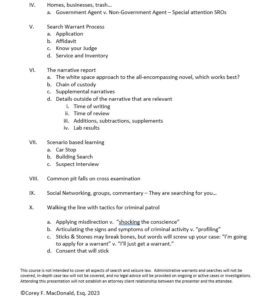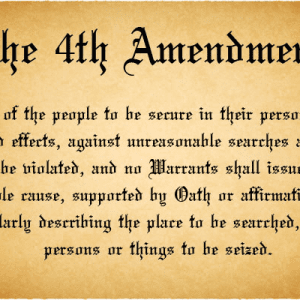Getting Your Evidence In: A guide to walking the line between lawful and unlawful Search and seizure.
Work through real examples of how to navigate roadside stops, consent, exigency, search warrants, and the factors that may sway the Judge when he or she decides on admissibility of evidence. Officers and task force members are often faced with judgment calls at the scene of the crime or the side of the road that require a solid understanding of which search, and seizure rules apply. This course will also focus on the issue of custody, and what custody does to search and seizure decisions.
This course will give you an introduction to the 4th Amendment to the Bill of Rights of the U.S. Constitution, as well as Part 1 Article 15 of the New Hampshire Constitution, the two primary documents that provide the basis for the federal and state case law that affects what evidence comes in, and what evidence stays out of court. Corey MacDonald, Esq is a retired law enforcement veteran who now practices law in New Hampshire, Massachusetts, and Colorado. MacDonald’s law enforcement career spanned the profession from patrol officer to Deputy Chief of Police, as well as serving as the City Prosecutor where he regularly argued against motions to suppress from many of the attorneys you face today. MacDonald served as an active officer and detective making hundreds of proactive arrests, many of which involved navigating the nuances of search and seizure. He was recognized with the DEA’s Looking Beyond the Traffic Ticket award for his proactive street-level drug work. Now as an attorney, he has seen and effectively argued the other side of the case, successfully excluding evidence that has been improperly seized.



